Dagstuhl Seminar 18442
Visualization and Processing of Anisotropy in Imaging, Geometry, and Astronomy
( Oct 28 – Nov 02, 2018 )
Permalink
Organizers
- Andrea Fuster (TU Eindhoven, NL)
- Evren Özarslan (Linköping University, SE)
- Thomas Schultz (Universität Bonn, DE)
- Eugene Zhang (Oregon State University - Corvallis, US)
Contact
- Shida Kunz (for scientific matters)
- Annette Beyer (for administrative matters)
Impacts
- Anisotropy Across Fields and Scale : open access book - Berlin : Springer, 2021. - 280 pp. - (Mathematics and visualization). ISBN: 978-3-030-56215-1 / 3-030-56215-8.
- Deterministic Group Tractography with Local Uncertainty Quantificationchapter in "Computational Diffusion MRI" : International Conference on Medical Image Computing and Computer-Assisted Intervention, MICCAI 2019 - Holm, Andreas Nugaard; Feragen, Aasa; Haije, Tom Dela; Darkner, Sune - Berlin : Springer, 2019. - pp 377-386.
- Enforcing necessary non-negativity constraints for common diffusion MRI models using sum of squares programming : article - Haije, Tom Dela; Özarslan, Evren; Feragen, Aasa - Amsterdam : Elsevier, 2019. - 15 pp. - (NeuroImage : 209. 2020).
- Optimized Response Function Estimation for Spherical Deconvolution : article in Computational Diffusion MRI : MICCAI Workshop, Shenzhen, China, October 2019 - Haije, Tom Dela; Feragen, Aasa - Berlin : Springer, 2020. - pp 25-34.
Schedule
Directional preference or anisotropy is encountered across many disciplines and spatial scales. For example, local anisotropies are imprinted in the cosmic microwave background radiation, the human brain contains elongated nerve fibers, etcetera. Such phenomena lead to physical quantities that take on different values along different directions. Compared to scalar or vector-valued data, it is much more challenging to model, process, and visualize anisotropic quantities.
Scientists encountering anisotropy in specific fields are often unaware of theoretical results and practical tools developed in other fields, while these might be relevant and adaptable to their needs. This Dagstuhl seminar will bring together researchers from three domains in which anisotropy plays an important role:
- Medical imaging, in which modalities such as diffusion-weighted magnetic resonance imaging (DW-MRI) and quantitative susceptibility mapping are used to probe structure-induced anisotropies, e.g., in the human brain.
- Geometry processing, where tensor fields have a wide range of applications, such as quadrangular and hexahedral geometry remeshing, street network modeling, geometry synthesis, computational architecture, and path planning for environmental scans.
- Astronomy, where anisotropies in the cosmic microwave background (CMB) are present in the form of a polarization tensor field. Moreover, in the field of “cosmography”, anisotropies in the cosmic web are linked to the complex patterns traced by galaxies.
Currently, there is little interaction between scientists working in these disciplines. Progress made in one field is usually not transferred to others despite the connections that could make an exchange of ideas very rewarding:
- Tensor fields play an important role in the three domains, i.e., they all share a common mathematical language.
- Software tools originally developed for medical imaging have proven useful for 3D visualization of astronomical data.
- In recent years, differential geometry and topology have made an important contribution in modeling and understanding the structure of the brain from neuroimaging data.
- The concept of connectivity arises in both astronomy and brain imaging.
- We expect that advanced techniques for smoothing or feature extraction in tensor-valued images could be transferred to geometry processing.
- Much insight has been gained on tensor field analysis, especially tensor field topology, by the visualization community. Similar needs have arisen in geometry processing.
 Andrea Fuster, Evren Özarslan, Thomas Schultz, and Eugene Zhang
Andrea Fuster, Evren Özarslan, Thomas Schultz, and Eugene Zhang
Topics and Motivation
Directional preferences or anisotropies are encountered across many different disciplines and spatial scales. For example, local anisotropies are imprinted in the cosmic microwave background radiation, the human brain contains elongated nerve fibers, etc. Such anisotropies lead to (physical) orientation-dependent quantities, i.e., quantities that take on different values when considered along different directions. Compared to scalar or vector-valued data, it is much more challenging to model, process, and visualize anisotropic quantities. Suitable mathematical models often involve tensors and other higher-order descriptors, and pose specific research challenges in several areas of computer science, such as visualization, image analysis, and geometry processing.
In order to explore synergies between different fields, to inform computer scientists about open application challenges, and domain experts about existing solutions, this seminar brought together researchers from three different disciplines:
- Medical imaging, where several modalities are now available to probe anisotropic behavior. In particular, Diffusion Weighted Magnetic Resonance Imaging (DW-MRI) is based on measuring anisotropic diffusion. It makes it possible to visualize and quantify microstructural information in fibrous tissues such as white-matter and muscles, and to infer larger-scale structures, such as fiber tracts in the human brain.
- Computer graphics and geometry processing, where tensor fields have a wide range of applications, such as quadrangular and hexahedral geometry remeshing, street network modeling, geometry synthesis, computational architecture, and path planning for environment scans.
- Cosmology and astronomy, where anisotropy plays a crucial role. For example, anisotropies in the cosmic microwave background (CMB) consist of small temperature fluctuations in the blackbody radiation left over from the Big Bang. Anisotropies are also found in the CMB in the form of a polarization tensor field, and they arise in the field of "cosmography, where efforts are united to map (parts of) the cosmos, e.g. the large-scale distribution of matter in the Universe or cosmic web.
Organization of the Seminar
This seminar was the seventh in a series of Dagstuhl seminars that was started in 2004, and has been devoted to the visualization and processing of tensor fields and higher-order descriptors. This particular instance of the seminar series focused on anisotropy in the fields of imaging, geometry, and astronomy.
To ensure a steady inflow of new ideas and challenges, we put an emphasis on inviting researchers who previously did not have the opportunity to attend one of the meetings in this series. This was true for almost half the attendees in the final list of participants.
The seminar itself started with a round of introductions, in which all participants presented their area of work within 100 seconds with help of a single slide. This helped to create a basis for discussion early on during the week, and was particularly useful since participants came from different scientific communities, backgrounds, and countries. A substantial part of the week was devoted to presentations by 29 participants, who spent 20 minutes each on presenting recent advances, ongoing work, or open challenges, followed by ten minutes of discussion in the plenary, as well as in-depth discussions in the breaks and over lunch. Abstracts of the presentations are collected in this report. On Wednesday we held the traditional social event which was joined by almost all participants, and offered additional welcome opportunities for interaction.
A total of six breakout sessions were organized in the afternoons of Monday and Tuesday. Moderators summarized the respective discussion in the plenary on Thursday afternoon. The organizers came up with initial suggestions for session topics, which were refined further after discussion with the seminar participants. The session topics were as follows:
- Astronomy
- Time-varying anisotropy
- Theoretical tools
- Visualization
- Diffusion MRI
- Geometry
Notes were taken during all sessions, and the main points are summarized later in this report.
Outcomes
The participants all agreed that the meeting was inspiring and successful. It also stimulated new scientific collaborations and joint grant proposals. In addition we plan to publish another Springer book documenting the results of the meeting. Participants have pre-registered seventeen chapters already during the seminar, and we are in the process of collecting additional contributions both from participants and from researchers working on closely related topics who could not attend the meeting. We expect that the book will be ready for publication in 2020.
Acknowledgment
The organizers thank all the attendees for their contributions and extend special thanks to the moderators of the breakout sessions and the team of Schloss Dagstuhl for helping to make this seminar a success. As always, we enjoyed the warm atmosphere, which supports both formal presentations as well as informal exchanges of ideas.
 Andrea Fuster, Evren Özarslan, Thomas Schultz, and Eugene Zhang
Andrea Fuster, Evren Özarslan, Thomas Schultz, and Eugene Zhang
- David Bommes (Universität Bern, CH) [dblp]
- Bernhard Burgeth (Universität des Saarlandes, DE) [dblp]
- Tom Dela Haije (University of Copenhagen, DK) [dblp]
- Ali Can Demiralp (RWTH Aachen, DE) [dblp]
- Aasa Feragen (University of Copenhagen, DK) [dblp]
- Luc Florack (TU Eindhoven, NL) [dblp]
- Andrea Fuster (TU Eindhoven, NL) [dblp]
- Shekoufeh Gorgi Zadeh (Universität Bonn, DE) [dblp]
- Hans Hagen (TU Kaiserslautern, DE) [dblp]
- Magnus Herberthson (Linköping University, SE) [dblp]
- Ingrid Hotz (Linköping University, SE) [dblp]
- Jana Hutter (King's College London, GB) [dblp]
- Daniel Jörgens (KTH Royal Institute of Technology - Stockholm, SE) [dblp]
- Andreas Kleefeld (Jülich Supercomputing Centre, DE) [dblp]
- Chunlei Liu (University of California at Berkeley, US) [dblp]
- Timothy Luciani (University of Illinois - Chicago, US) [dblp]
- Evren Özarslan (Linköping University, SE) [dblp]
- Renato Pajarola (Universität Zürich, CH) [dblp]
- Reynier Peletier (University of Groningen, NL) [dblp]
- Marco Pizzolato (EPFL - Lausanne, CH) [dblp]
- Gerik Scheuermann (Universität Leipzig, DE) [dblp]
- Thomas Schultz (Universität Bonn, DE) [dblp]
- Chantal Tax (Cardiff University, GB) [dblp]
- Donggang Wang (Leiden University, NL)
- Bei Wang Phillips (University of Utah - Salt Lake City, US) [dblp]
- Carl-Fredrik Westin (Harvard Medical School - Boston, US) [dblp]
- Hsiang-Yun Wu (TU Wien, AT) [dblp]
- Eugene Zhang (Oregon State University - Corvallis, US) [dblp]
- Yue Zhang (Oregon State University - Corvallis, US) [dblp]
- Jovisa Zunic (Mathematical Institute SANU, RS) [dblp]
Related Seminars
- Dagstuhl Perspectives Workshop 04172: Visualization and Image Processing of Tensor Fields (2004-04-18 - 2004-04-23) (Details)
- Dagstuhl Seminar 07022: Visualization and Processing of Tensor Fields (2007-01-09 - 2007-01-13) (Details)
- Dagstuhl Seminar 09302: New Developments in the Visualization and Processing of Tensor Fields (2009-07-19 - 2009-07-24) (Details)
- Dagstuhl Seminar 11501: Visualization and Processing of Tensors and Higher Order Descriptors for Multi-Valued Data (2011-12-11 - 2011-12-16) (Details)
- Dagstuhl Seminar 14082: Visualization and Processing of Higher Order Descriptors for Multi-Valued Data (2014-02-16 - 2014-02-21) (Details)
- Dagstuhl Seminar 16142: Multidisciplinary Approaches to Multivalued Data: Modeling, Visualization, Analysis (2016-04-03 - 2016-04-08) (Details)
Classification
- computer graphics / computer vision
Keywords
- tensor fields
- anisotropy
- diffusion-weighted imaging (DWI)
- geometry
- astronomy

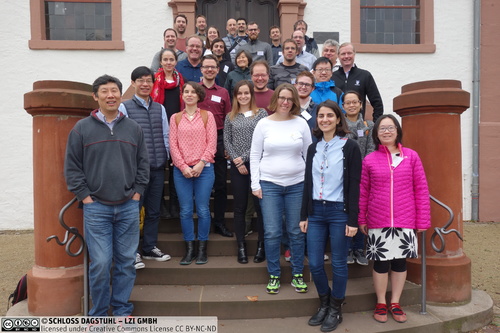
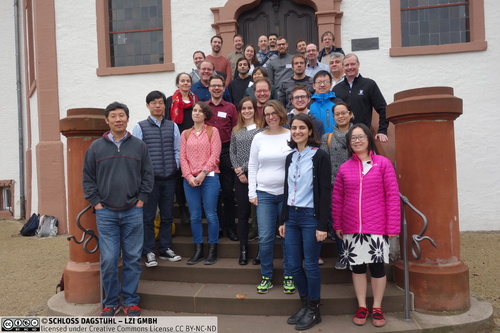
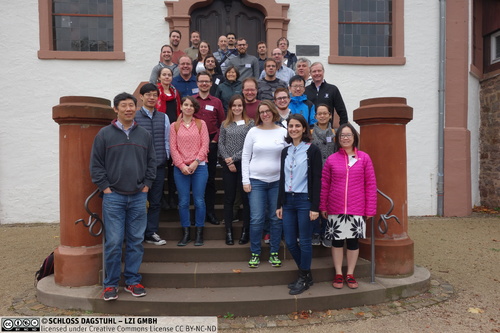
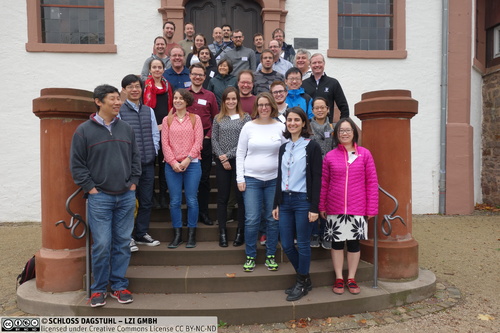
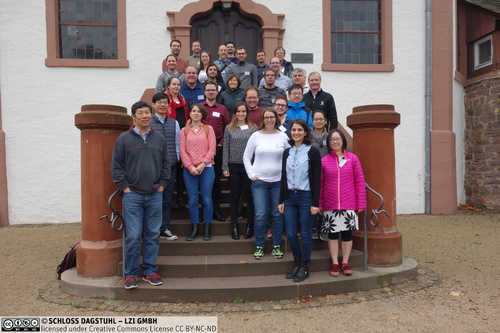
 Creative Commons BY 3.0 DE
Creative Commons BY 3.0 DE
